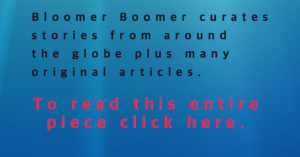Can Feminist Sculpture Redeem L.A.’s Gentrifying Arts District?
Before it was called the “Downtown Arts District,” many more artists lived and worked in this stretch of central Los Angeles. The neighborhood was a rough-edged alternative for people in need of large, industrial spaces. A home for those willing to be Skid Row-adjacent and amenity-non-adjacent. But Los Angeles is making an attempt at urbanization, at feeling like a much denser city, and rapid gentrification has followed. Poketo, a newly arrived store in the Arts District, sells a designer chair for $1,225. Blacktop, the café down the street, is known for its $4 white coffee. And the new One Santa Fe, a luxury apartment complex, charges about $2,000 per month for a studio. To the few remaining holdovers in the area, this new art of commerce is at once alienating and welcome. Art Share L.A., a non-profit studio and gallery that provides affordable housing to 30 low-income artists, has seen an entire neighborhood of live-work spaces disappear. Still, “artists need people with money,” a longtime resident said.
The walkable Arts District is part of what’s envisioned as an urban corridor for L.A.: a growing web of galleries, shops, restaurants, and rental housing. In March, just six months after the Broad Museum began to draw zigzagging queues of visitors downtown, Hauser Wirth & Schimmel, the international mega-purveyor of contemporary art, opened what real estate developers might call another “anchor” establishment. The gallery spreads out over 112,000 square feet of a repurposed flourmill, a bank, and three warehouses on East Third Street. Throughout the complex, industrial residues peek out from new construction and design: old floor tile, red and yellow hazard paint, metal knobs and levers protruding from scabby walls. There are four separate galleries, a printed matter lab (for displaying light-sensitive papers and books), and a courtyard dotted with sculptures and communal tables. A long, covered breezeway reminiscent of a delivery ramp or loading dock now hosts installations, and several wall paintings by L.A. graffiti artists have been preserved or expanded. The space is undeniably beautiful. But its connections to the past are purely aesthetic, not emotional or cultural.
Known in six other cities as Hauser & Wirth, the Los Angeles gallery is marked by the addition of partner Paul Schimmel, who previously worked as chief curator of the Museum of Contemporary Art in downtown L.A., now across the street from the Broad. He and Jenni Sorkin, an art historian at the University of California, Santa Barbara, have assembled an ambitious first show: “Revolution in the Making: Abstract Sculpture by Women, 1947–2016.” The exhibition is a vast, encyclopedic survey of more than 100 works by three dozen artists. Just one in five of the exhibits are actually for sale; the rest are on loan from private collections, museums, or the artists themselves. Indeed, the show makes the gallery feel like a museum, with lengthy wall text (though Spanish-speaking Angelenos are out of luck) and an unusually long run—“Revolution in the Making” is on view through September. Amid local fears of gentrification and displacement, Hauser Wirth & Schimmel has launched an unimpeachable show: democratic and feminist.
Category: Baby Boomer




































